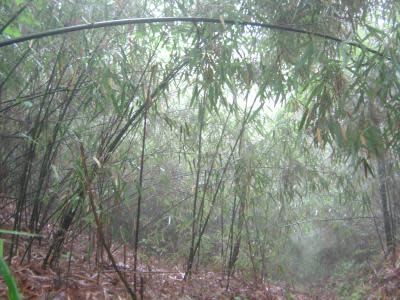Spanning 34 miles, the Hong Kong-Zhuhai-Macau Bridge (HZMB) is the largest sea-crossing bridge-and-tunnel system in the world.
Aimed to last over a century, this $18.8 billion architectural masterpiece – consisting of three cable-stayed bridges, an undersea tunnel, and four artificial islands – was particularly designed to withstand China’s unforgiving sun, relentless seawater corrosion, and fierce typhoons.
With seven tropical cyclones hitting the East Asian country’s coastline each year out of 27 to 28 forming nearby, the need for storm-resistant structures is undeniable. Throughout the years infrastructure investment in China remains a key driver of economic growth, accounting for 6.7 percent of the country’s GDP.
However, it’s the ingenious use of 215,278 square feet (20,000 square meters) of bamboo panels on the bridge’s artificial islands that has drawn attention on a global scale, proving that nature-inspired solutions can withstand extreme conditions as well. These panels have endured every environmental challenge since the bridge opened in 2018.
China’s innovative take on bamboo
China is the world’s largest bamboo supplier, with over 4.22 billion poles produced in 2022. In addition, its total industry output reached $ 74.2 billion in 2023. As a global leader in bamboo cultivation and innovation, the country has increasingly explored ways to integrate this fast-growing, sustainable material into large-scale infrastructure projects.
These biodegradable and eco-friendly engineered bamboo products are growing in popularity, and have recently seen expanded applications in construction, pipelines, furniture, and decorations – all due to their strength and abundance. Meanwhile, thousands of other bamboo-based products such as weaving crafts, fiber textiles, and charcoal products have also emerged, finding new relevance in modern use.

With over 6.67 million hectares of bamboo forests, China has not only maximized its bamboo resources, with large bamboo pole production increasing more than sevenfold in the last 25 years, but has also pioneered innovative applications across various industries.
“Currently, the majority of the world’s bamboo resources are distributed in developing countries,” Lou Zhicao, PhD, an associate professor at Nanjing Forestry University’s Bamboo Research Institute told China Daily.
Standing the test of time
Engineers say the bamboo composite panels on the Hong Kong-Zhuhai-Macao Bridge remain “as solid as ever,” even six years after the bridge’s initial opening. According to Lou, while bamboo’s rich nutrients contribute to its rapid growth, they also make it highly prone to decay.
To tackle the issue, Lou and his team have recently introduced a heat treatment that eliminates decay-causing nutrients while preserving the bamboo’s structural integrity. This innovation significantly reduces bamboo’s complex processing time by over 50 percent and enables it to withstand outdoor conditions for at least five years without requiring anti-mold treatments.
“The new mild pyrolytic technique was designed to reduce more than half of both the heat treatment temperature and time, as well as cutting the energy consumption,” says Lou adding that the team also developed a low-emission adhesive with reduced levels of formaldehyde and phenol, to minimize the release of harmful chemicals.
“China is not only the world’s largest bamboo producer but also holds a comparative advantage in processing capabilities,” says Zhicao. “Maintaining China’s leadership in bamboo technology innovation is crucial. The industry should focus on advancing automation and smart manufacturing while actively shaping international standards.”
#Bamboobased #panels #brave #typhoons #corrosion #worlds #largest #sea #crossing










Leave a Reply